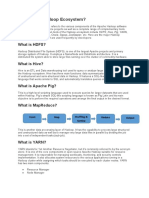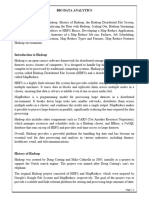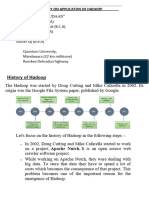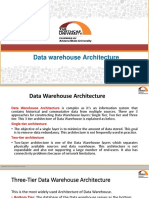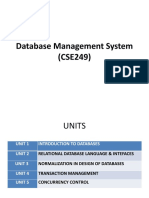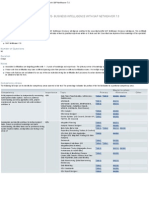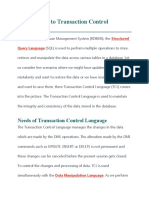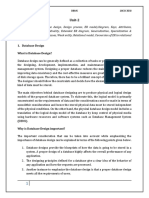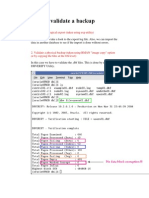100% found this document useful (1 vote)
59 views49 pagesBigdata & Hadoop: Shushrutha Reddy K M.Tech in Computational Engineering From Rgukt Senior Bigdata Developer @servicenow
BigData-Hadoop, Stages in Big Data Analytics, Types of Big Data Analytics, Evolution of Hadoop, Hadoop, Name Node, Data Node, Replication Management, HDFS Architecture, MapReduce YARN, Resource Manager, Node Manager, Application Workflow in Hadoop YARN, Spark, Amazon EMR
Uploaded by
Shushrutha Reddy KCopyright
© © All Rights Reserved
We take content rights seriously. If you suspect this is your content, claim it here.
100% found this document useful (1 vote)
59 views49 pagesBigdata & Hadoop: Shushrutha Reddy K M.Tech in Computational Engineering From Rgukt Senior Bigdata Developer @servicenow
BigData-Hadoop, Stages in Big Data Analytics, Types of Big Data Analytics, Evolution of Hadoop, Hadoop, Name Node, Data Node, Replication Management, HDFS Architecture, MapReduce YARN, Resource Manager, Node Manager, Application Workflow in Hadoop YARN, Spark, Amazon EMR
Uploaded by
Shushrutha Reddy KCopyright
© © All Rights Reserved
We take content rights seriously. If you suspect this is your content, claim it here.
/ 49




















